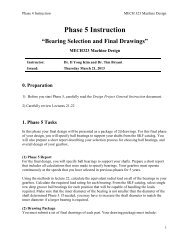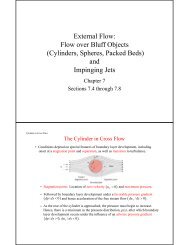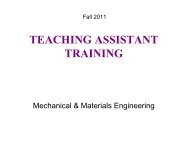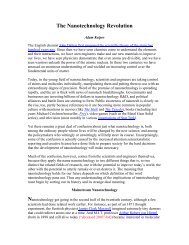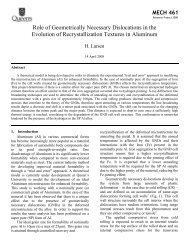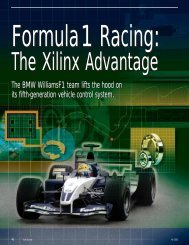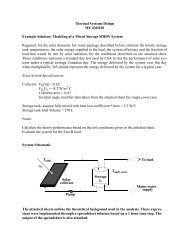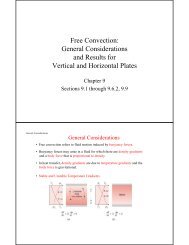Numerical Study of Passive and Active Flow Separation Control ...
Numerical Study of Passive and Active Flow Separation Control ...
Numerical Study of Passive and Active Flow Separation Control ...
You also want an ePaper? Increase the reach of your titles
YUMPU automatically turns print PDFs into web optimized ePapers that Google loves.
Viscous terms are taken into account by including the viscous effect near the wall. The<br />
computation <strong>of</strong> the characteristic variables appeared in the modified Navier-Stokes<br />
equations depends on the direction <strong>of</strong> characteristic waves at the boundary. The<br />
corresponding characteristic variables <strong>of</strong> outgoing characteristic waves are computed<br />
from the interior nodes. The characteristic variables <strong>of</strong> incoming waves are determined<br />
by the boundary conditions. In the case <strong>of</strong> subsonic flow around airfoils, there are four<br />
incoming waves <strong>and</strong> only one outgoing wave at the inflow boundary. Thus, the<br />
freestream velocity <strong>and</strong> temperature are specified at this boundary, while the density is<br />
computed from interior points. Similarly, the nonreflecting boundary conditions also<br />
apply to the far-field, downstream, <strong>and</strong> no-slip adiabatic wall boundaries. More details <strong>of</strong><br />
the mathematical model <strong>and</strong> numerical method can be found in [17, 18, 32].<br />
The numerical simulation is performed using parallel computing with the Message<br />
Passing Interface (MPI) libraries. The computational domain is partitioned into n equal-<br />
sized sub-domains along the streamwise direction (ξ - direction) <strong>and</strong> each sub-domain is<br />
assigned to one processor. The implicit LU-SGS algorithm is implemented through a<br />
blockwise iteration within each processor <strong>and</strong> the solution data on the sub-domain<br />
interfaces are exchanged with neighboring processors at the end <strong>of</strong> iteration. The parallel<br />
computer code has been thoroughly tested on different platforms with the performance<br />
scaling almost linearly over a large number <strong>of</strong> processors.<br />
2.3 Immersed Boundary Method<br />
The immersed boundary method developed by Peskin [28] has been widely applied to<br />
numerical simulation <strong>of</strong> various flow problems. More recently, this method has been used<br />
for the simulation <strong>of</strong> three-dimensional flows by Goldstein et al.[13], Saiki <strong>and</strong><br />
Biringen[29], Arthurs et al. [3], <strong>and</strong> Grigoriadis et al. [15]. The latest review is given by<br />
Mittal <strong>and</strong> Iaccarino [23]. The basic difference between the immersed boundary method<br />
<strong>and</strong> conventional approach lies in the way the solid boundaries are defined. Instead <strong>of</strong><br />
using structured or unstructured boundary-fitting grids to define the geometrical<br />
configuration, the immersed-boundary method actually mimics the presence <strong>of</strong> solid<br />
bodies by means <strong>of</strong> suitably defined body forces. There are two different ways to impose<br />
8



